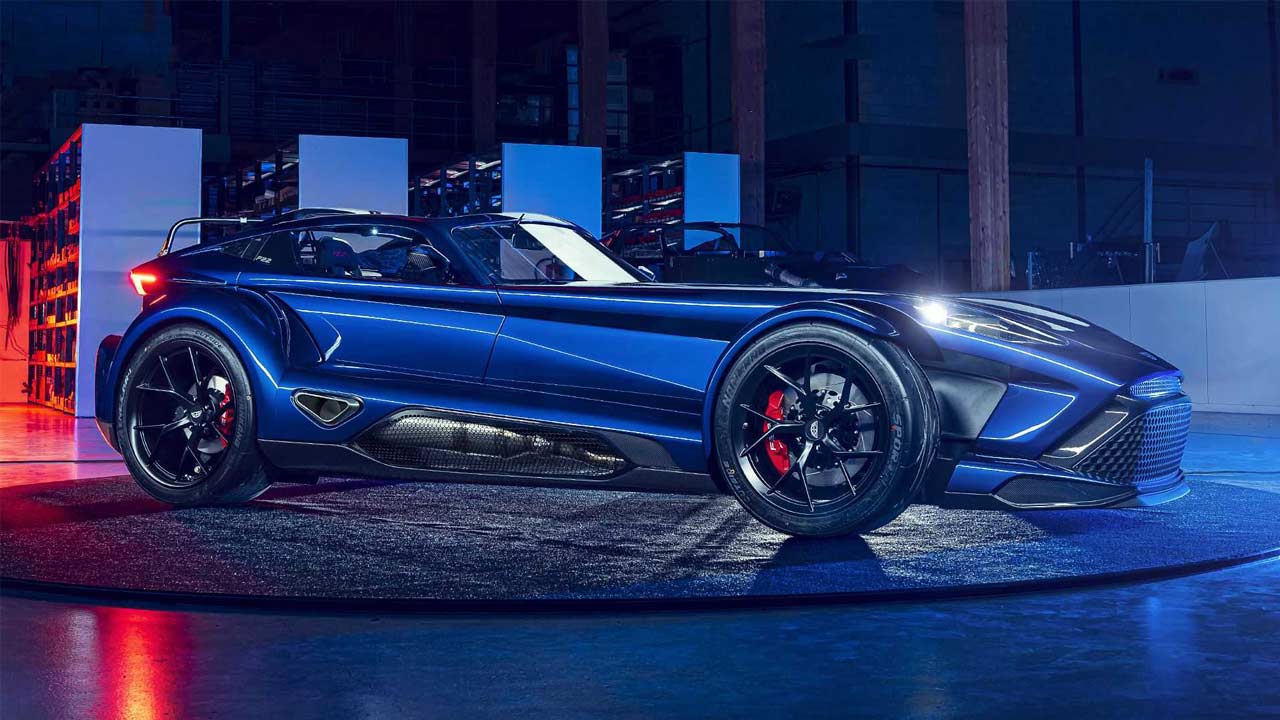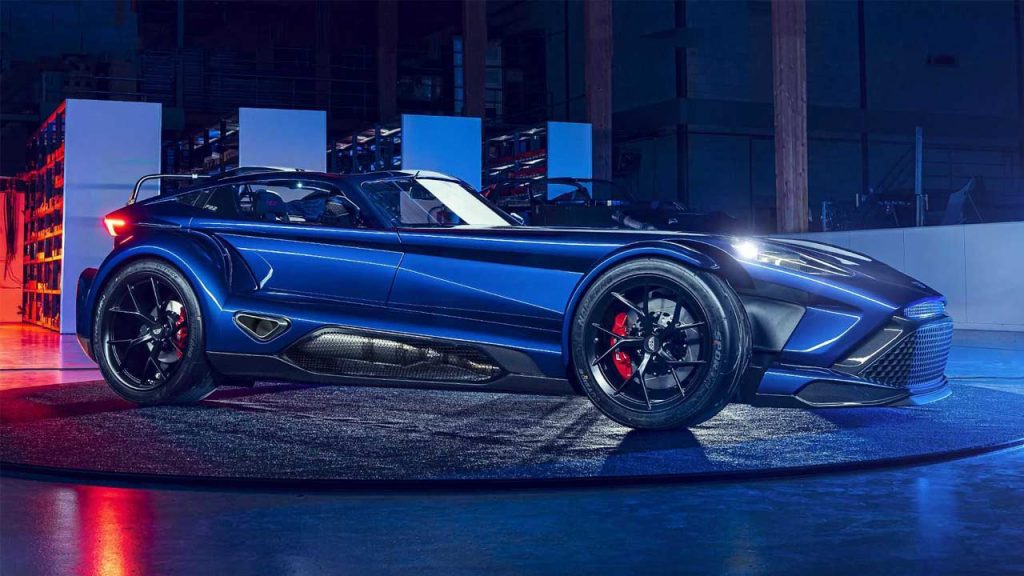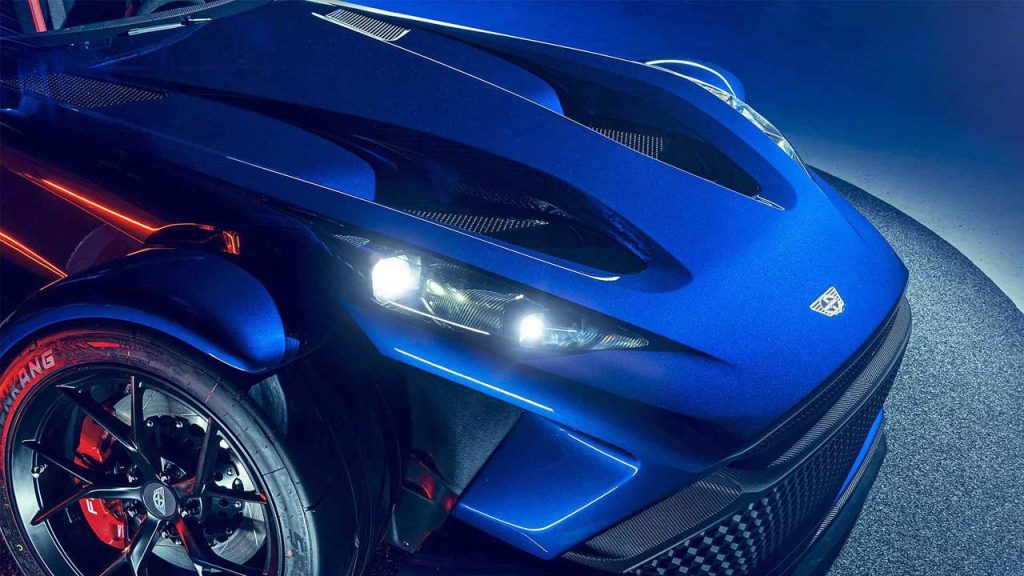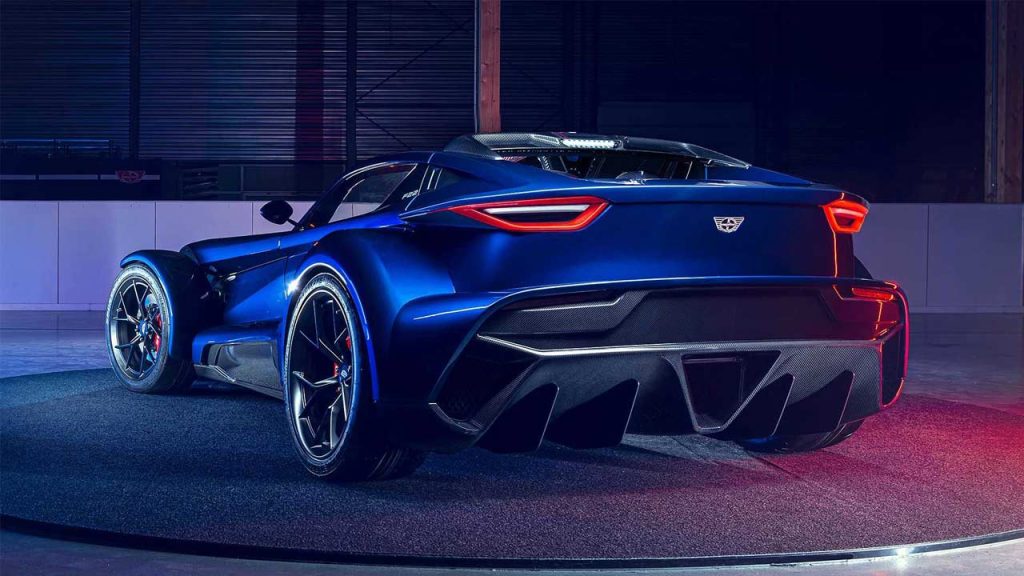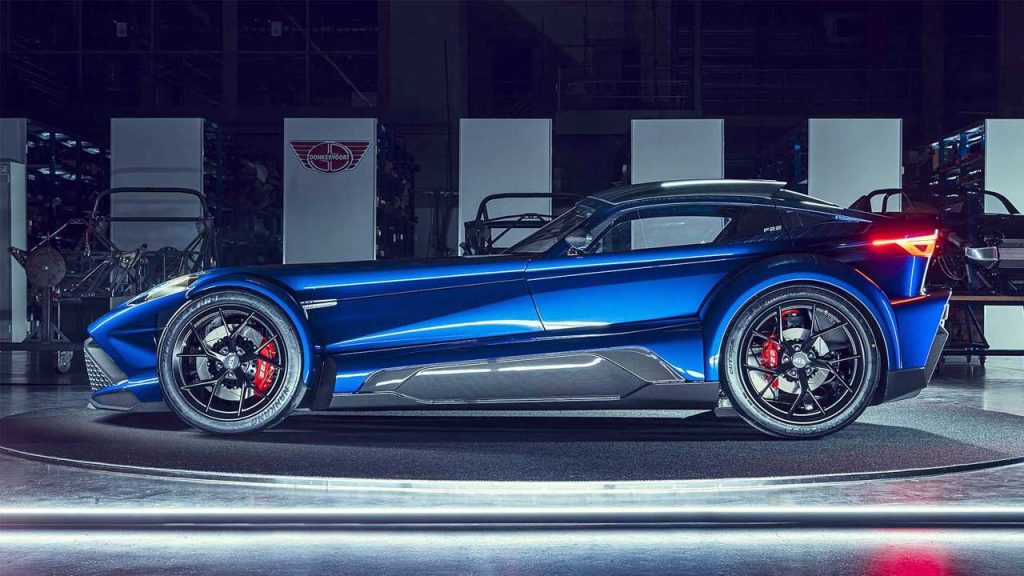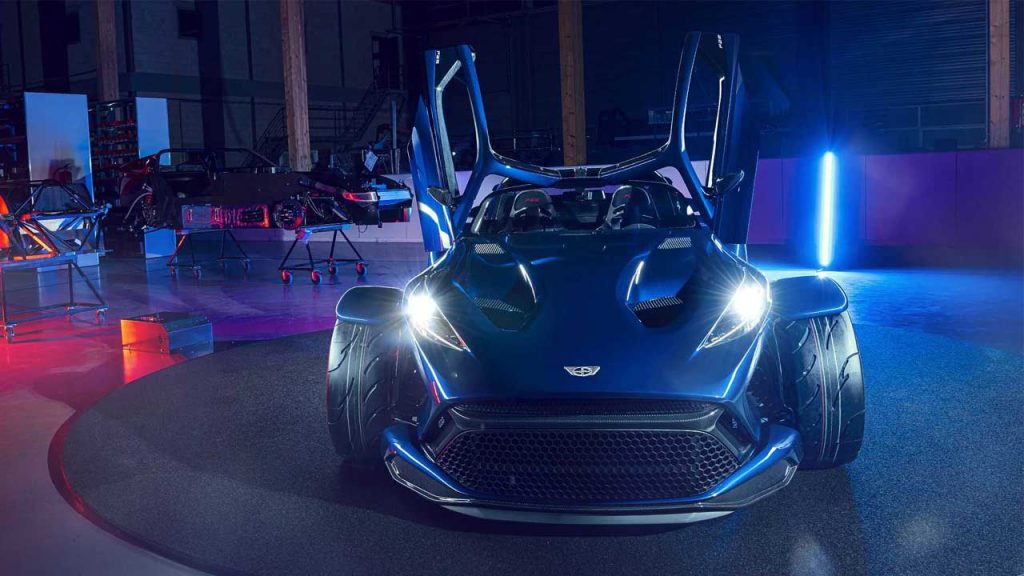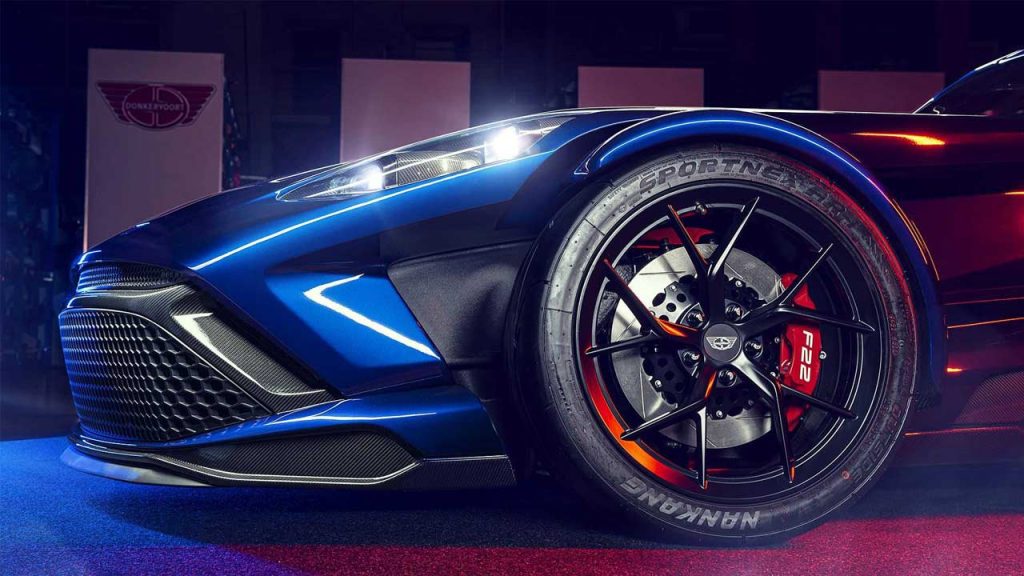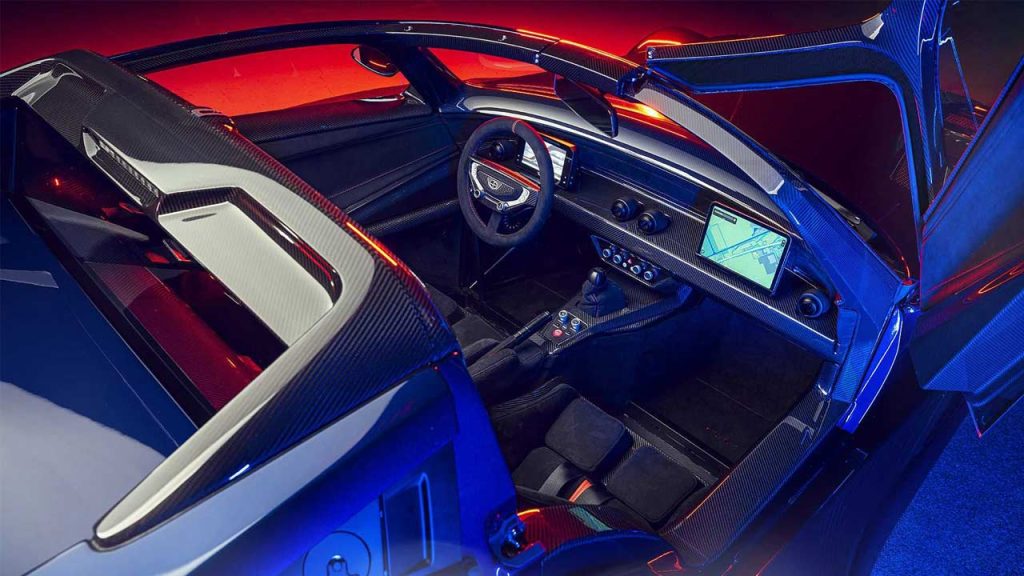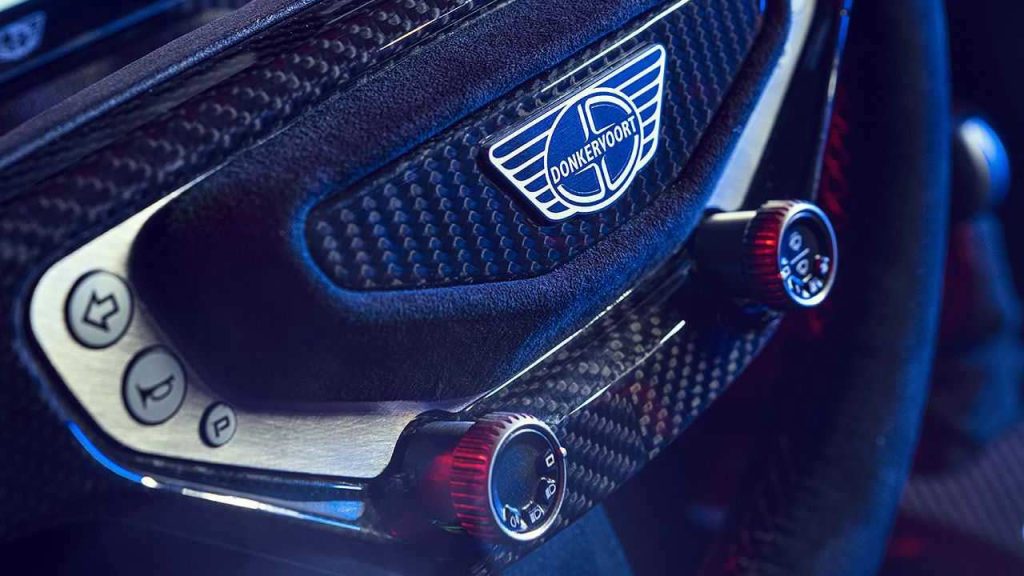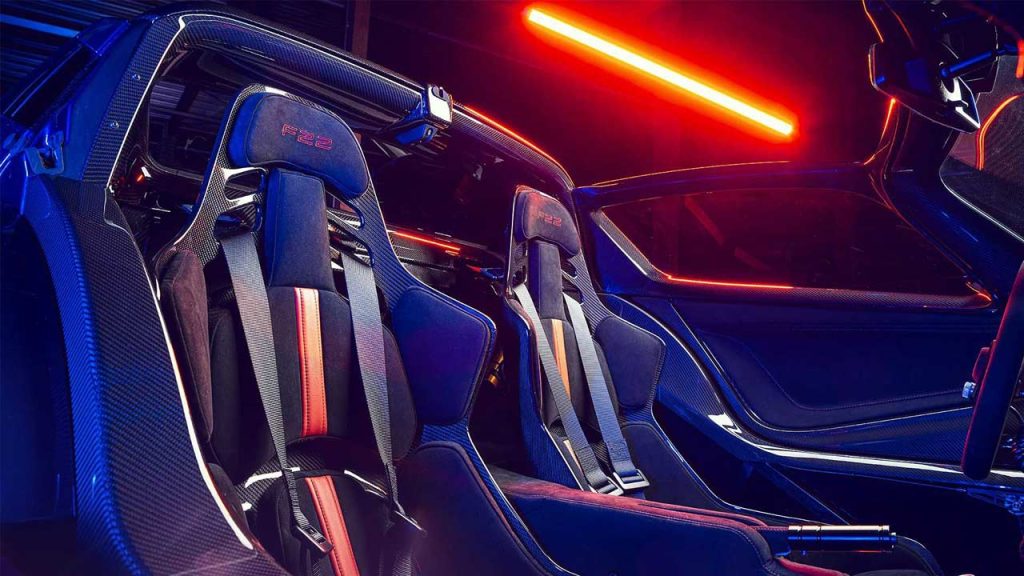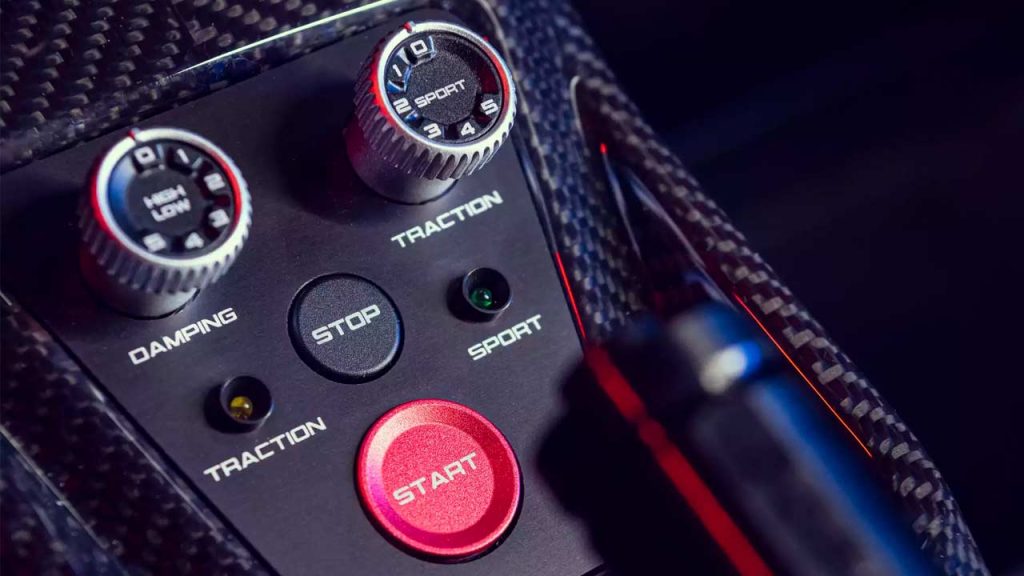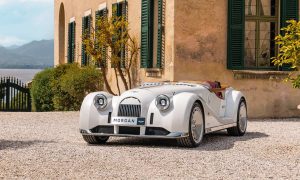Corners with 2.15G of lateral acceleration.
Remember the Dutch company Donkervoort? Well, it has now revealed its latest model called the Donkervoort F22—limited to 75 units. Donkervoort said that the initial plan was to build only 50 units, but since all of ’em were pre-sold during the sketching phase itself, the company decided to build 25 more for those who badly want one. And, for those interested to know, the F22 is named after Filippa (born on May 22, 2022), the first child of Donkervoort Managing Director Denis Donkervoort.
The F22 is gonna succeed the D8 GTO, and Donkervoort proudly announces that not a single nut, bolt or screw is interchangeable with its predecessor, which I guess is a wonderful thing for all 75 collectors. The chassis is a hybrid of tubular steel and in-house developed carbon fibre, resulting in a body-in-white that is claimed to offer a 100% boost in torsional and bending rigidity over the outgoing D8 GTO. The F22 is 264 mm longer than its predecessor, which is claimed to offer aerodynamic benefits and faster track times due to aerodynamic stability. Of course, the extra length has also added 100 mm to the cockpit, making it a bit more comfy for taller drivers. It is also wider and taller than its predecessor. LWH: 4,039 x 1,912 x 1,105 mm; wheelbase: 2,420 mm.
Other key highlights include new dampers with an adjustable hydraulic ride-height system, which can raise or lower the F22 by as much as 35 mm. New AP Racing braking system is another highlight, with steel discs and a 4-piston front caliper setup saving 10 kg (22 lbs) over the outgoing model’s system. Donkervoort claims that the braking performance has improved by 30%. The discs measure 330 mm at the front and 279 mm at the rear. Racing ABS is an optional extra. The car rides on a staggered setup of 18-inch alloy wheels at the front and 19-inch at the rear. Forged wheels and carbon fibre wheels are optionally available, saving 8 kg (18 lbs) and 5.4 kg (12 lbs) per wheel, respectively.
In case you’re wondering, the carbon fibre roof panels are removable and can be stored in a matching bag in the luggage compartment. Each roof panel contains its own small spoiler for high-speed stability and noise reduction. In the cockpit, there are lightweight Recaro seats and what is claimed to be the first six-point harnesses approved both for racing and road use.
Donkervoort still borrows its engine from Audi Sport. Powering the Donkervoort F22 is a 2.5-litre straight-five TFSI engine that pumps out 368 kW (500 metric hp) at 6,360 rpm and 640 Nm (472 lb-ft) of torque at 5,150 rpm, which are, of course, plenty for a car that weighs only 750 kg (1,653 lbs) unladen. There’s a significant increase in power and torque compared with those of the GTO-JD70. The engine is coupled with a 5-speed manual gearbox that drives the rear wheels. The official 0-100 km/h (62 mph) sprint time is 2.5 seconds and the top speed is 290 km/h (180 mph).

Leave a Reply
Note: Comments that are unrelated to the post above get automatically filtered into the trash bin.
